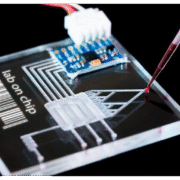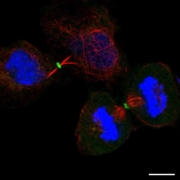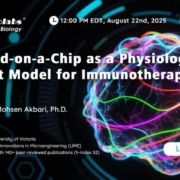The Burnout of Recovery Workers: When Healers Need Healing
Introduction
In the quiet hours after the crisis has passed, when the sirens fade and the clients leave, a different kind of emergency often goes unnoticed. It unfolds not in the streets or clinics but within the hearts of those who dedicate their lives to healing others. Recovery workers—those who labor tirelessly in addiction counseling, mental health support, emergency response, and trauma care—are increasingly facing an internal unraveling. This is the paradox of the helper in distress. As the world leans heavily on their compassion and stamina, many are silently burning out.
Understanding Recovery Work
Recovery work is an intricate tapestry of human engagement. It spans across domains where individuals assist others in navigating pain, trauma, and systemic marginalization. Whether it’s a social worker guiding a teenager through rehab or a crisis counselor answering late-night calls, the emotional labor involved is immense.
But this is not ordinary stress. Recovery workers routinely absorb the secondhand pain of others—known as vicarious trauma. They carry the weight of relapsed clients, grieving families, and bureaucratic hurdles. Over time, the line between empathizing and internalizing blurs. What begins as noble intent can morph into emotional depletion, quietly eroding their ability to function effectively.
A Modern Approach to Addiction Treatment Access
In today’s digital age, accessibility to vital medications for opioid recovery has expanded significantly. Individuals seeking treatment can now obtain an online Subutex prescription through licensed telehealth providers, streamlining care for those who may lack access to in-person clinics. This virtual pathway not only reduces logistical barriers but also minimizes stigma, enabling patients to engage with healthcare discreetly and effectively.
With proper screening and medical oversight, the process ensures safety while promoting early intervention. The shift toward digital prescribing reflects a broader commitment to patient-centered care in the evolving landscape of addiction treatment.
Recognizing the Signs of Burnout
Burnout in recovery roles rarely announces itself with fanfare. It creeps in subtly—through fatigue that no sleep can cure, irritability that feels foreign, or an ever-present fog clouding once-sharp minds.
Three core dimensions define this condition. The first is emotional exhaustion, where the well of compassion runs dry. Next is depersonalization, often expressed as cynicism or emotional withdrawal from clients. Finally, there’s a diminished sense of personal accomplishment, as victories feel hollow and failures loom large.
Behaviorally, burnout might manifest in absenteeism, forgetfulness, or self-isolation. Cognitively, decision-making becomes sluggish, and empathy turns brittle. These symptoms can masquerade as personal shortcomings, deepening the sense of isolation.

Root Causes of Burnout in Recovery Roles
The culprits behind burnout are not merely personal vulnerabilities. Recovery workers operate in a crucible of chronic trauma exposure. Day after day, they witness despair, regression, and the slow churn of systems that often fail those most in need.
Organizational shortcomings exacerbate the strain—understaffing, lack of supervisory support, limited access to mental health care for the caregivers themselves. Many institutions expect Herculean emotional labor with minimal infrastructural compassion in return.
Compounding this is the “savior complex,” a subtle internalization of responsibility for others’ healing. It creates a dangerous psychological loop where asking for help equates to failure, and rest becomes a guilty indulgence.
The Hidden Stigma of the “Wounded Healer”
The archetype of the unwavering caregiver is deeply embedded in cultural narratives. Recovery workers are expected to be bastions of strength, unflinching in the face of chaos. But when the healer begins to unravel, shame swiftly follows.
There is a pervasive stigma attached to caregivers admitting they, too, need healing. Seeking therapy, taking leave, or even speaking candidly about fatigue can be perceived as weakness. The guilt is compounded by the belief that others have it worse—leading many to minimize their own suffering.
This silence fosters a form of professional loneliness. Recovery workers, surrounded by suffering yet unable to express their own, often find themselves emotionally exiled.
Guidance for a New Beginning
Finding the right support during recovery can make all the difference, especially when navigating opioid dependency treatment. One effective step is to find Subutex doctors who are certified to prescribe this medication as part of a comprehensive recovery plan. These professionals provide not only medical oversight but also a supportive environment tailored to individual needs.
Whether through in-person clinics or telehealth services, access to qualified physicians has expanded, offering hope to many seeking stability. Their expertise helps manage withdrawal symptoms safely and fosters long-term healing, making professional guidance a cornerstone of sustained recovery.
Towards Sustainable Recovery Work
Addressing burnout requires more than wellness slogans or sporadic mental health days. Institutions must architect systemic support structures that prioritize psychological safety. This includes manageable caseloads, regular debriefings, and access to professional counseling.
Training programs should equip workers with skills in emotional resilience, mindfulness, and boundary-setting. Emotional hygiene must be regarded as indispensable as procedural competency.
Equally vital is the cultivation of peer support networks. Reflective supervision—where workers are encouraged to explore their emotional responses in a structured, nonjudgmental setting—can be profoundly restorative.
Conclusion
The burnout of recovery workers is not a personal failure—it is a societal oversight. Those who dedicate their lives to mending others deserve to be held, protected, and nourished in return. Healing must not be a one-way street.
If we are to sustain the healers, we must rehumanize their roles. It begins by acknowledging their struggles, legitimizing their needs, and embedding compassion not just in their duties—but in their environments. The health of our communities depends not only on those who serve them, but on how well we care for those who care.









